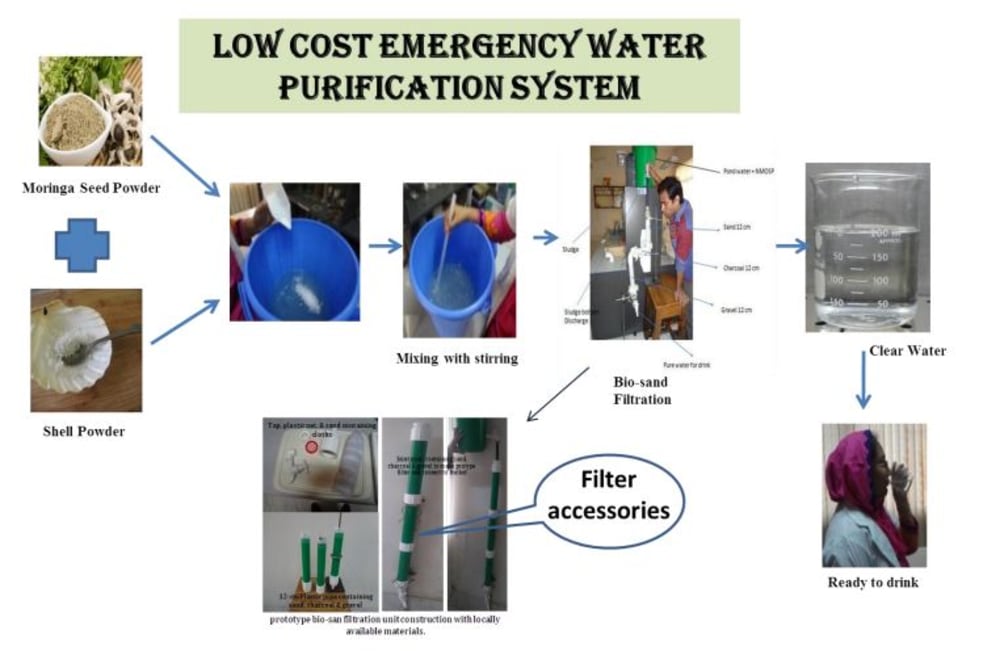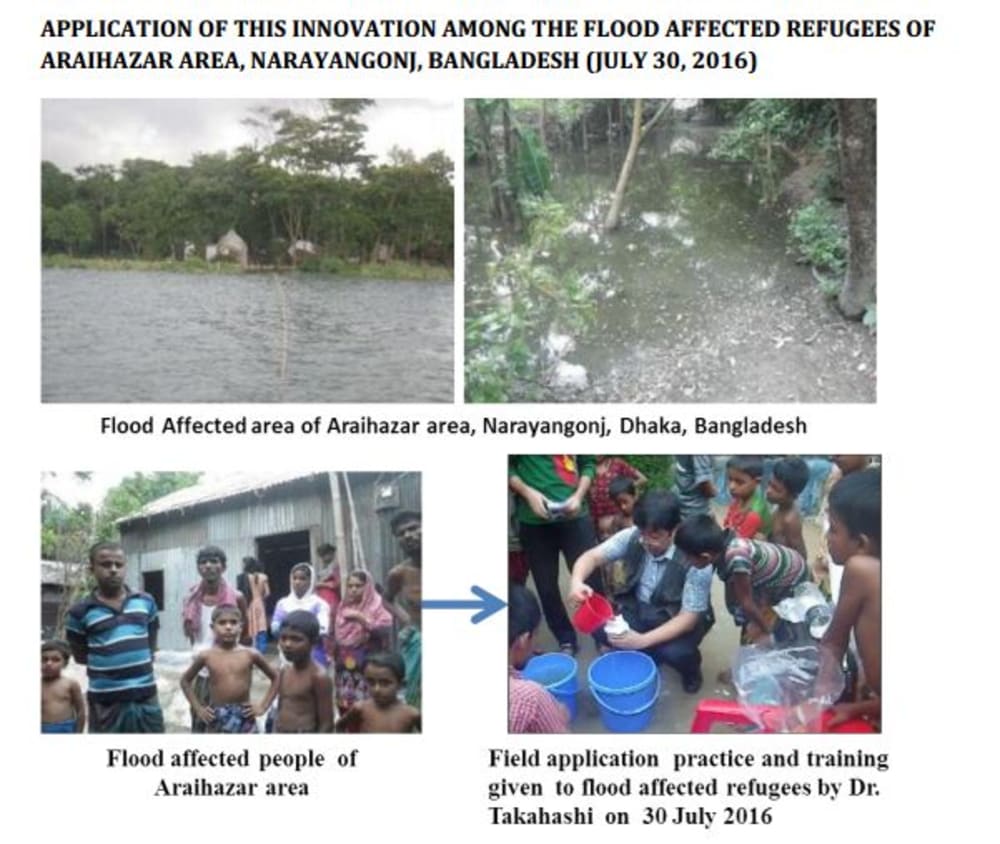Providing clean water in humanitarian emergencies is essential, however few household water purification systems have been developed with this context in mind. In an emergency setting usability, durability, transportability, and cost arise as crucial aspects of purification systems design that sit alongside the vital pathogen filtering capacity of the technologies. Focusing on these features of purification systems, in addition to their filtering capabilities,is essential to improve water treatment in humanitarian emergencies.
THE METHODS:
In this study, flood water collected in a bucket (20 L) from nearby sources and 2.0 gram of MOSP (moringa seed powder, and shell powder) were added and mixed vigorously and left for 10 minutes showed a clear water layer at the top and a sediment layer at the bottom of the bucket. The clear water was then passed through an 8-fold sari cloth and/or natural bio-sand filtration and the resulting water was found drinkable.
THE FILTER:
The bio-sand filter consists of three (12-cm long X 2.5 cm in diameter) PVC pipe containing sand bag (size 10cm x 2.5cm), charcoal bag (size 10cm x 2.5cm) and gravel bag (size 10cm x 2.5cm) and joints with threaded fittings. Cotton fabrics are preferable to prepare bags of desired size. Just pour the bag inside the pipe sequentially and fitted the pipe tightly. A tightly fitted lid can be placed at the top to prevent contamination and unwanted pests from entering the filter. With each filter, 2 bags of sand, charcoal and gravels to be supplied to the consumers. Every 3 months, the consumers will replace the 1st bags with 2nd bag inside the pipe and continue using. The 1st bag need to be clean and then dried properly and then use again and again.
ADVENTAGES:
1) Low cost and easily adoptable to any countries in any emergencies
2) Peoples involvement necessary thus sustainable
3) Reduce diarrhoeal and other gastro-intestinal diseases
4) Increase sanitation & hygiene and improvement of livelihood
5) Increase use of surface water at household level
6) Reduce the disparities in access to drinking water in rural and urban people
Urge:
The success of this innovation depends on your initiatives to use this technique in any countries of the world wherever water scarcity exists.This simple and easy treatment method is particularly helpful for flood prone areas of developing countries, where there is a scarcity of drinking water during flood. The people can easily get safe drinking water if training on these technique is provided to the village people so that they themselves can make the device when needed, thus empowering themselves.
Like this entry?
-
About the Entrant
- Name:Sharmin Zaman Emon
- Type of entry:teamTeam members:Dr. Sharmin Zaman Emon, Dr. Latiful Bari, Dr. Anowara Begum, Dr. Khondkar Siddique-e- Rabbani
- Software used for this entry:Not applicable
- Patent status:patented








